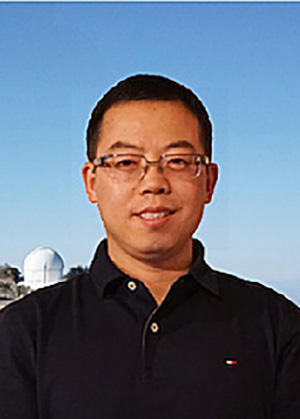USTC Astronomy Colloquium Series: 2019 Spring
A Magellan M2FS Spectroscopic Survey of Galaxies at Redshift >= 6
Linhua Jiang 教授
北京大学/KIAA
2019/05/21, 4:00pm , the 19th-floor Observatory Hall

High-redshift (z >= 6) star-forming galaxies are a natural tool to study the early galaxy evolution and explore the history of cosmic reionization. In this talk, I will present our recent work on our understanding of these high-redshift galaxies. In particular, I will introduce our on-going program that uses Magellan M2FS to spectroscopically identify a large number of galaxies at 5.5 < z < 6.7 over nearly four square-degrees on the sky. M2FS is a fiber-fed, multi-object (256 fibers) spectrograph on the Magellan Clay telescope. With a large field of view (0.5 degrees in diameter), it is efficient to identify line-emitting galaxies at high redshift. We have observed about three square degrees in a few well-studied deep fields and obtained more than 250 luminous Lyman-alpha emitting galaxies at z = 5.7 and 6.6. This is the largest sample of its kind so far. We are using this unique sample to study a variety of galaxy properties and their implications to cosmic reionization. I will list a few examples of current results, including Lyman-alpha luminosity function, Lyman-alpha emission halos, protoclusters of galaxies, etc.
Linhua Jiang is a Youth Qianren Research Professor at the Kavli Institute for Astronomy and Astrophysics, Peking University. He obtained his B.S. and M.S. degrees from Peking University. In 2008 he obtained his Ph.D. degree from University of Arizona. Before he joined Peking University as a faculty member in 2014, he was a Hubble Fellow at Arizona State University. Professor Jiang has a broad research interests in extragalactic astronomy and observational cosmology, including high-redshift quasars and supermassive black holes, high-redshift galaxies and clusters, their physical properties and implications to cosmic reionization.
 邮编:230026 ,
邮编:230026 ,  联系电话: 0551-63601861
联系电话: 0551-63601861 Email:
Email: